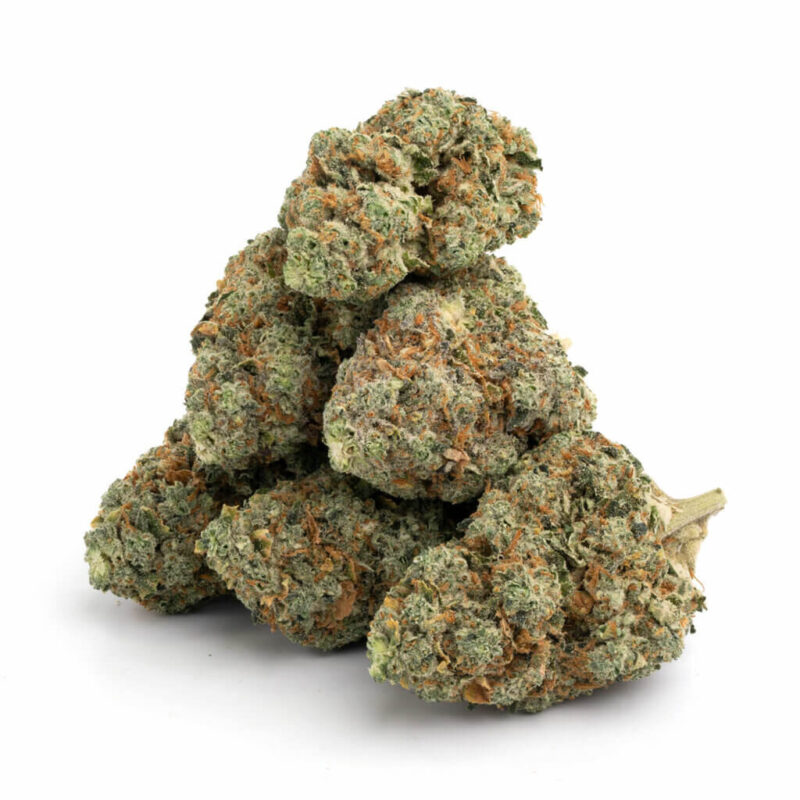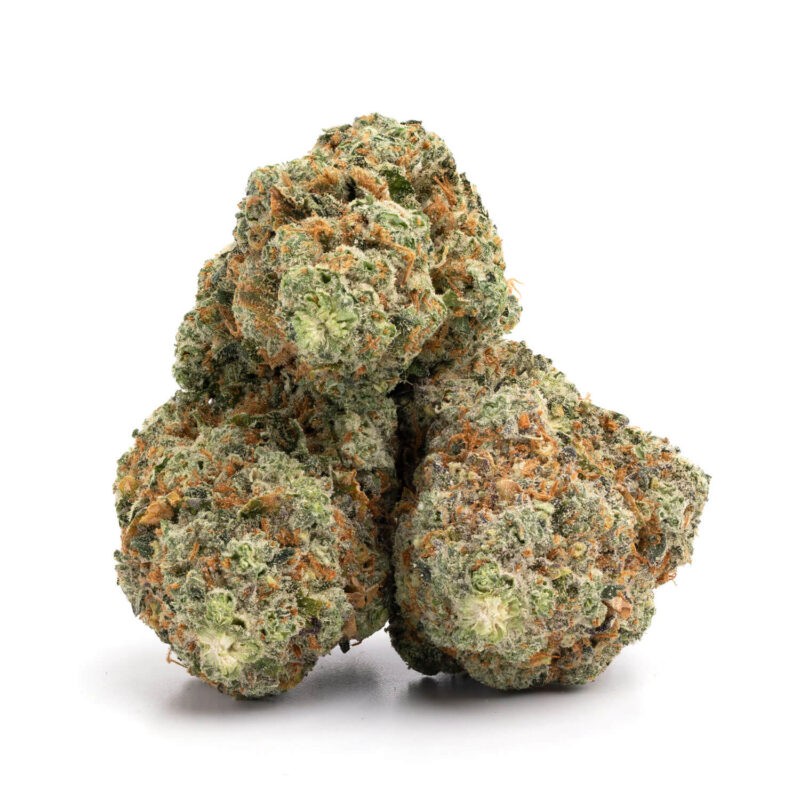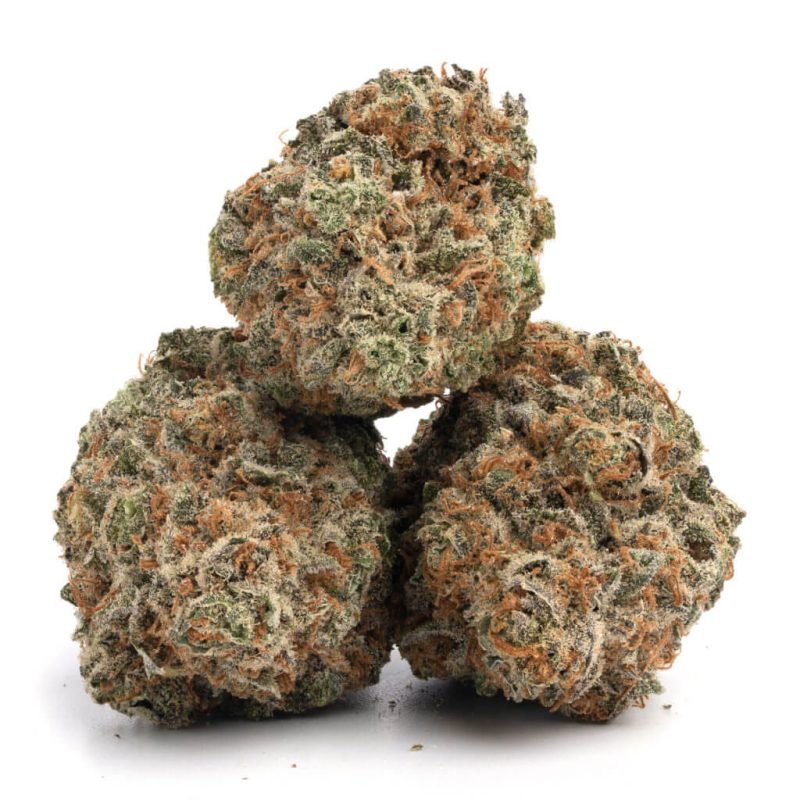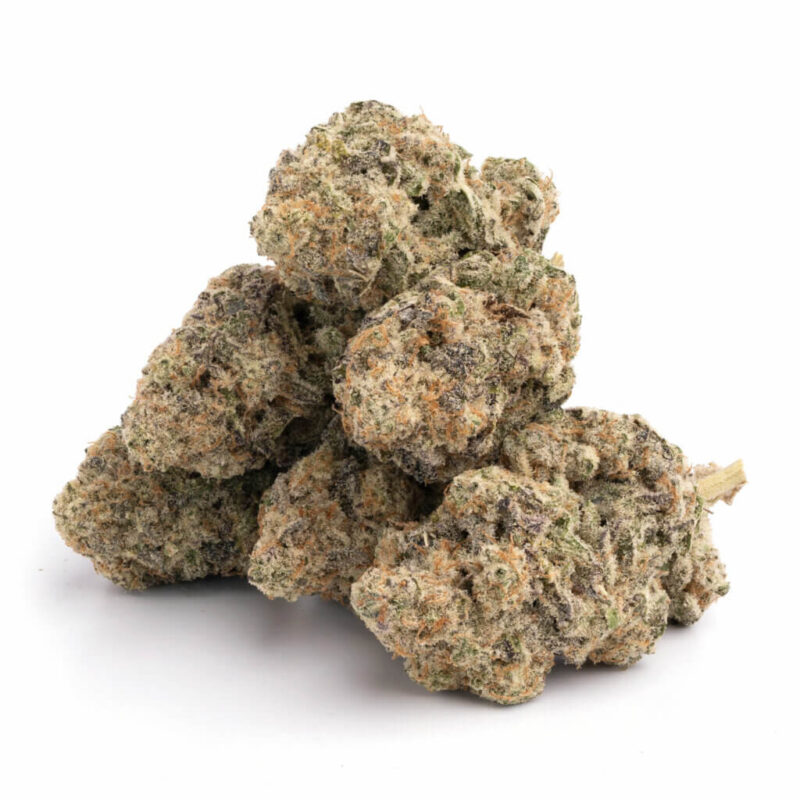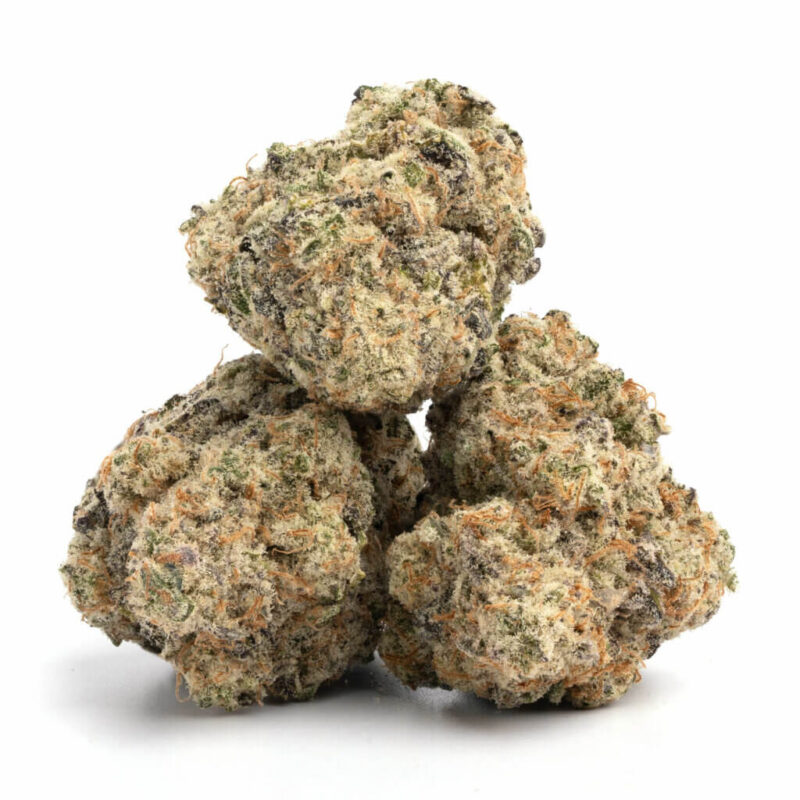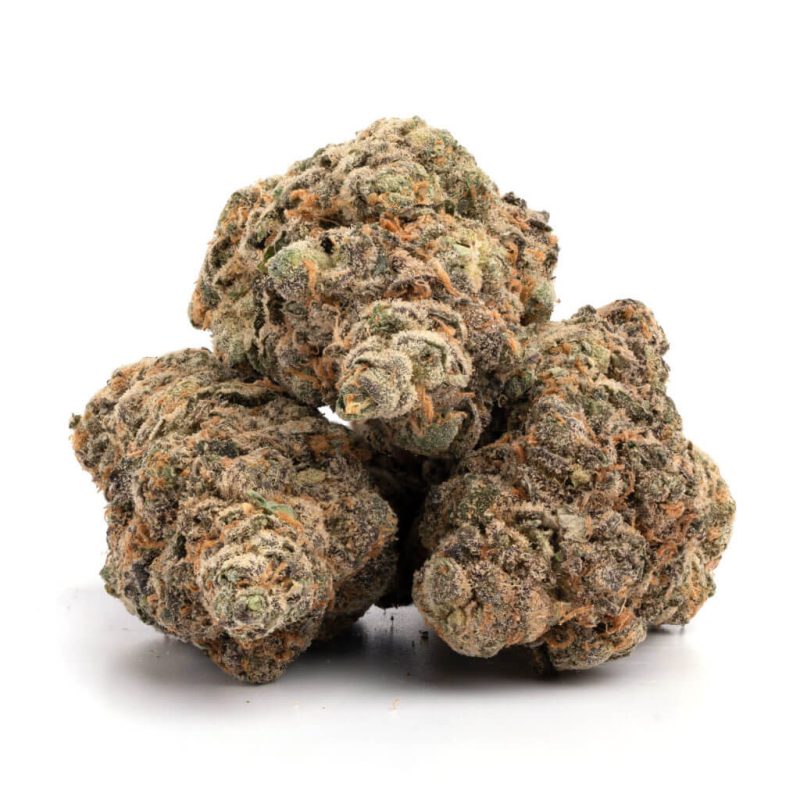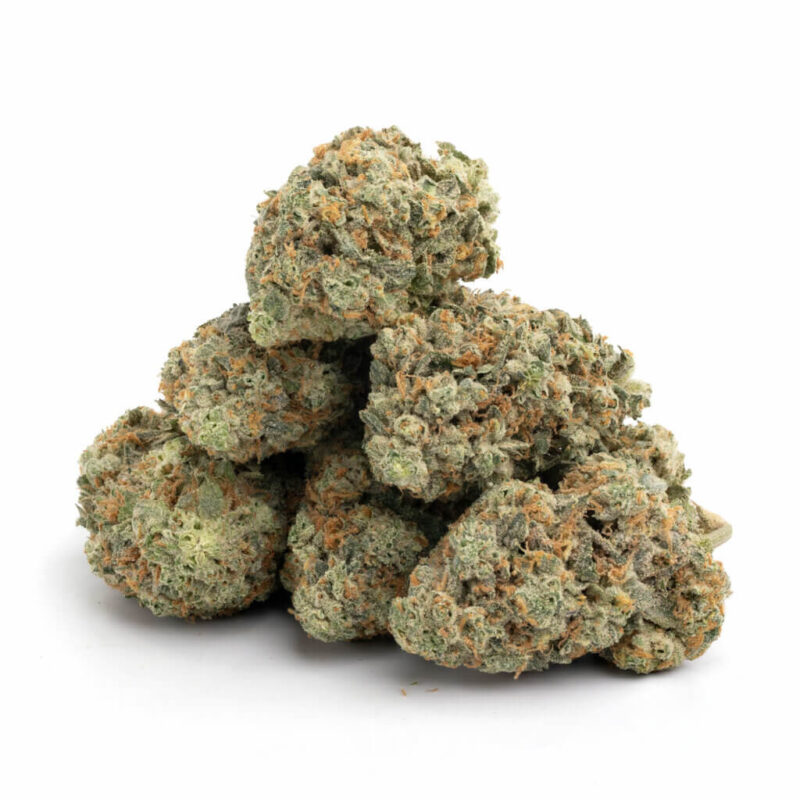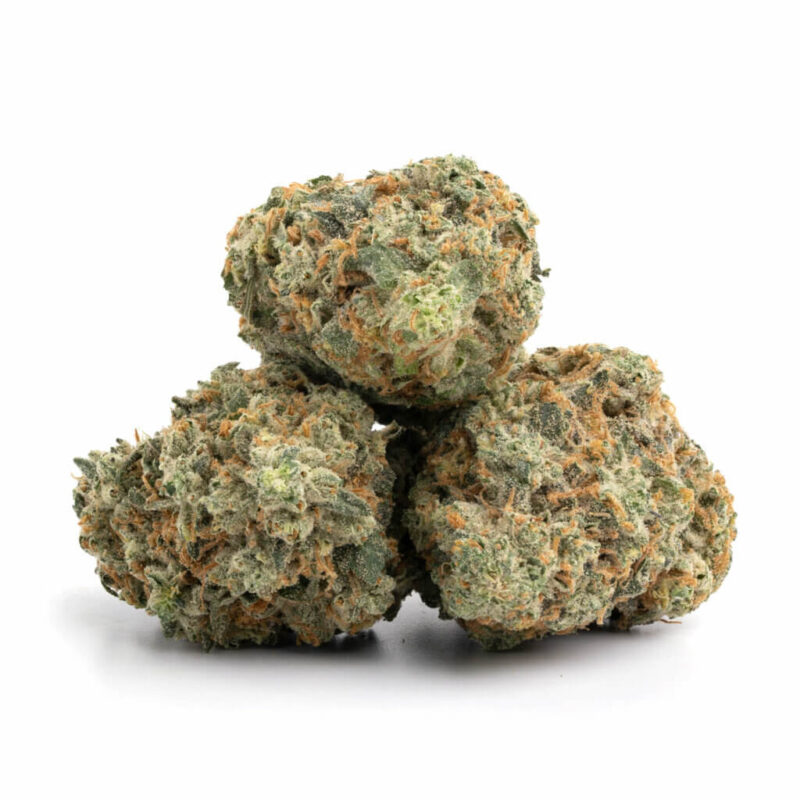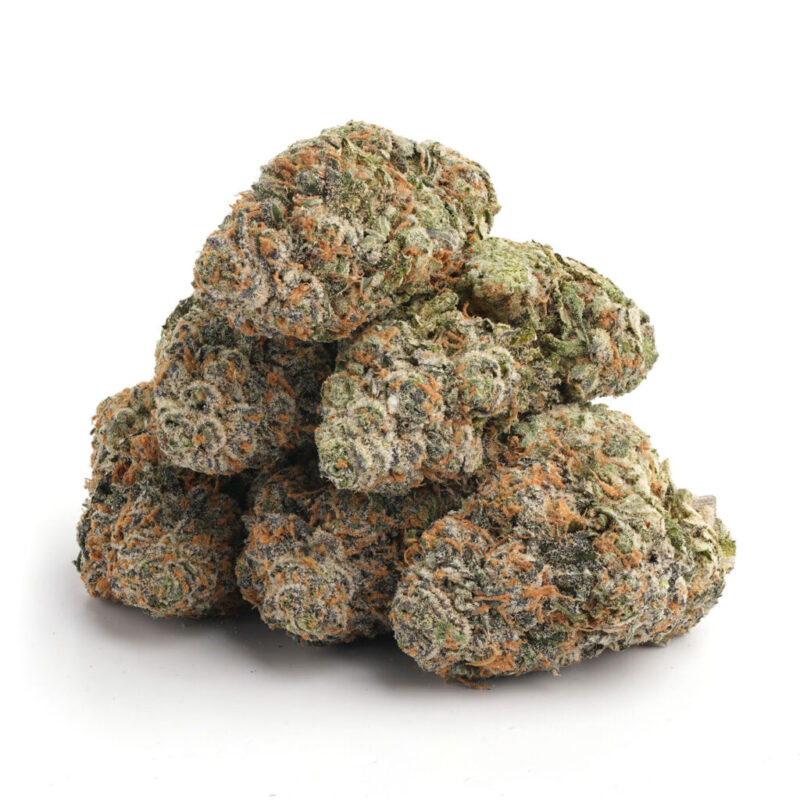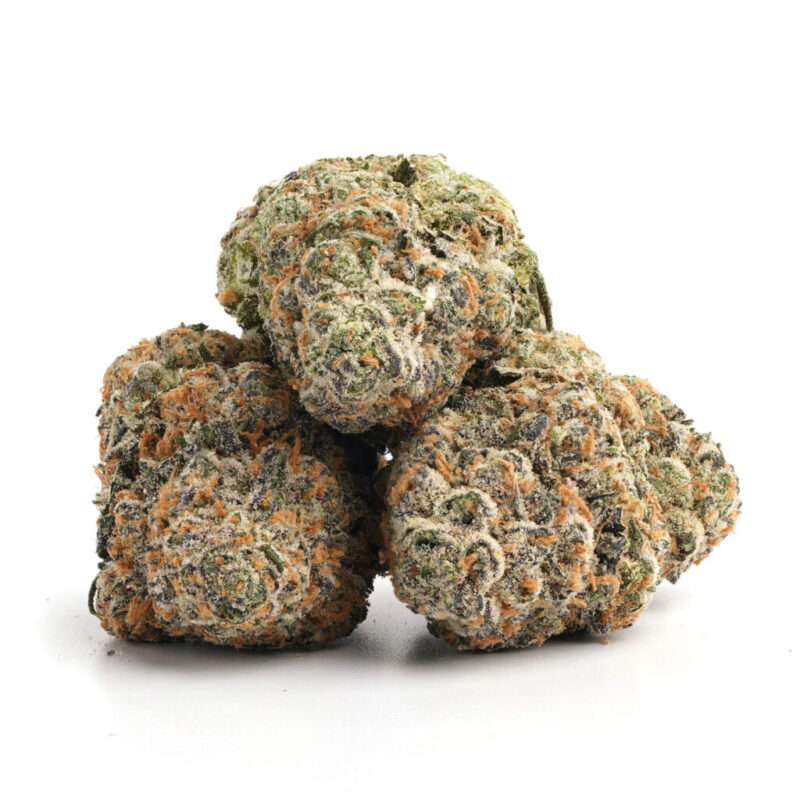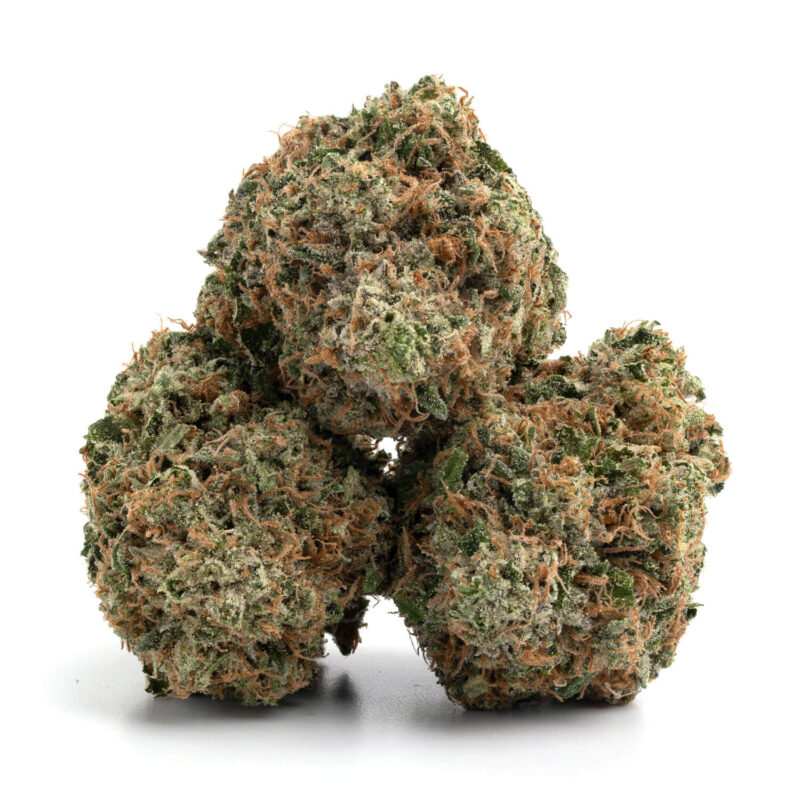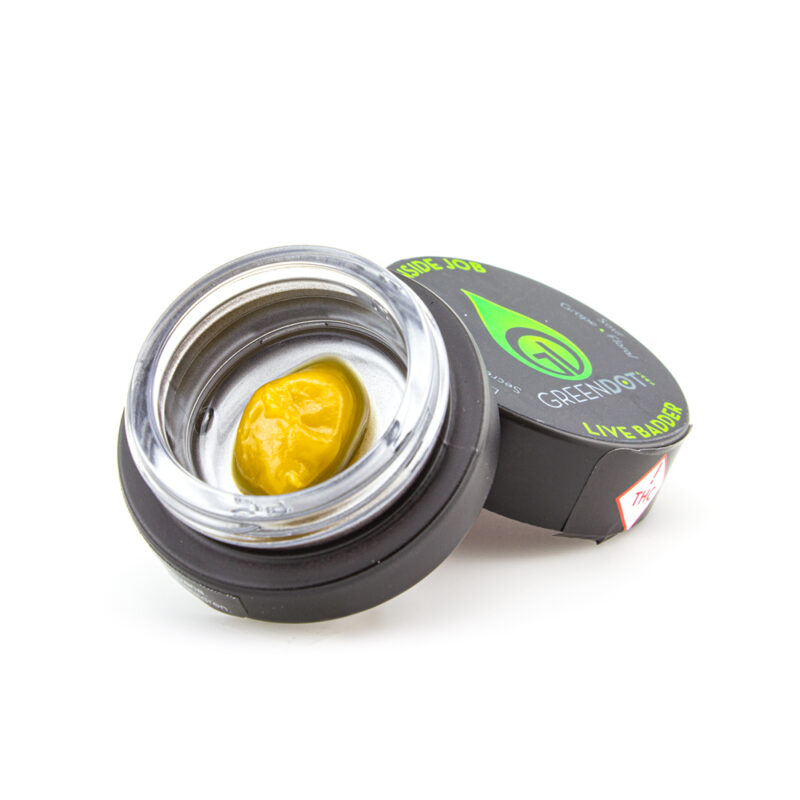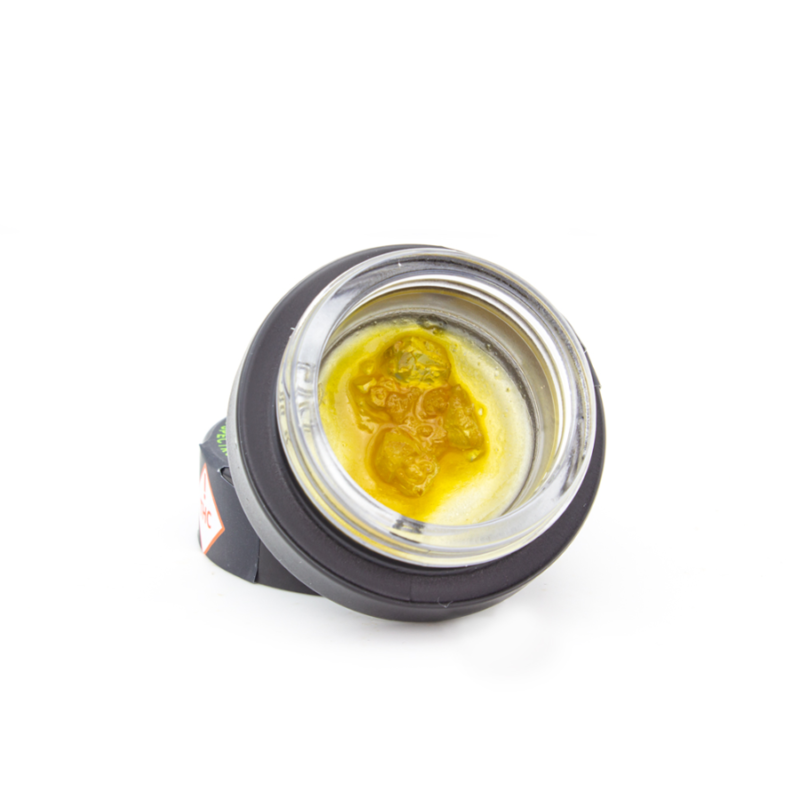Research on the cannabinoids in the cannabis plant has exploded in recent years, as more evidence of their benefits for inflammatory and neurological issues is published.
However, terpenes enhance many of the recreational and therapeutic effects of cannabis and significantly alter the high you can expect. Here, we discuss the major types of terpenes found in cannabis and how they affect your experience, from couch lock-inducing myrcene to energizing limonene.
WHAT ARE TERPENES?
Terpenes are aromatic compounds found in plant extracts. These are the compounds responsible for giving essential oils their aroma and their effects on your physical and mental health [1].
There are over 100 terpenes found in cannabis, with other estimates passing 150. The largest number identified in any one plant is 40, but there may be many others without names or a clearly defined presence.
Cannabinoids are also similar to terpenes, as they have what is known as a C21 terpenophenolic skeleton. Even though most terpenes are found in trace amounts, major and minor terpenes combine to create the distinctive aromas of marijuana strains.
The dramatic differences between Sour Diesel and Pineapple Express, for example, are thanks to variations in the levels of each terpene. Chemically speaking, terpenes are based on isoprene units, which are made of five carbon and eight hydrogen atoms. While monoterpenoids have one five-carbon unit, others have up to six [2].
WHERE DO TERPENES COME FROM?
Terpenes come from countless plants known to have a detectable scent. They range from mighty pine trees to tiny mint bushes but are all known for their distinctive aromas. Even mushrooms like reishi contain terpenoids.
In the cannabis plant, both cannabinoids and the monoterpenes (e.g. limonene) come from geranyl diphosphate. The sesquiterpenes come from farnesyl diphosphate. From here, a series of chemical reactions turn them into hundreds of cannabinoids and terpenes across weed strains [3].
The different terpenes in various cannabis strains come from differences in the enzymes that make them. Most can produce multiple terpenes, which is why you’ll see common terpenes across most strains. Terpenes can repel predatory insects, or attract insects that benefit marijuana plants.
Limonene and pinene are two examples of repellent terpenes. Some support the plant immune system or improve their resilience towards environmental stresses. Others can even communicate information about the environment to other parts of the plant or between different plants [4].
HOW DO TERPENES AFFECT THE BODY?
Terpenes may interact with a wide range of pathways in your brain, immune system, and other parts of your body. Cannabis terpenes may have relevant medicinal benefits if they are present in levels above 0.05%.
One important feature of terpenes is that they are fat-soluble, so they can access parts of your cells and tissues like your cell membranes and fatty brain tissue. Terpenes are highly bioavailable thanks to this.
For example, limonene has a 70% bioavailability when you inhale it through vaping or smoking. Pinene has a 60% bioavailability. Linalool, the main terpene in lavender, was shown to be rapidly absorbed as part of massage oil, with its peak concentration seen by 19 minutes [5].
HOW DO TERPENES ALTER THE HIGH?
Terpenes affect whether your high is more likely to be energizing and uplifting, or sedative with a side serving of couch-lock. Certain terpenes can turn even strong weed strains with THC contents of over 25% into perfect wake-and-bake varieties.
It’s important to remember that terpenes won’t help clear THC from your body. Even invigorating Green Crack or Strawberry Cough are unsafe for driving if you are at any risk of being drug tested. Both of these can have THC levels well over 20%. Let’s look at Mimosa as an example.
This is one of the most energizing strains, with the cannabis industry often promoting it to relieve stress and depression. Its limonene content encourages stress relief by brightening your mood. On the other hand, the myrcene levels make Mimosa more sedative when you consume it in large doses.
Indica-dominant Berries and Cream has more myrcene than any other terpene. It’s well-loved for its sedative properties. You can expect both mentally and physically relaxing properties from Berries and Cream.
WHAT ARE THE MOST COMMON TYPES OF CANNABIS TERPENES?
Although there are over 100 known terpenes in cannabis, several are present at far higher levels than the others in many strains. However, they can be present in minimal amounts in some varieties.

MYRCENE
Myrcene is one of the most common cannabis terpenes. It’s responsible for the infamous “couch lock” effect seen with Indica-dominant cannabis strains. These are also well-loved by tokers with insomnia thanks to Myrcene’s abilities as a sleep aid.
However, myrcene is more than just a sedative and muscle relaxant. It may increase the pain-relieving effects of cannabinoids by helping them reach the brain. This could combine with myrcene’s own analgesic benefits to give medical marijuana users even greater results [6].
Myrcene also reduces inflammation via the prostaglandin E2 pathway, which is known for contributing to certain painful conditions. Lab studies even show that it could protect cartilage cells, potentially slowing osteoarthritis [5].
LIMONENE
Energizing limonene is the second most widespread terpene in the natural world. Citrus fruits feature among the other plants that contain it. Limonene is also the “mother” of all terpenes in the monoterpenoid category [5].
It’s a powerful antioxidant and antimicrobial but may benefit brain health. Limonene-rich essential oils were found to significantly boost mood in hospitalized depressed patients. Nine out of 12 were able to stop their antidepressants, and their immune cell counts were normalized. This may be because it increases serotonin and dopamine, which can lift mood and boost cognition [5]
HUMULENE
Humulene is responsible for the woody, earthy notes in strains including Original Glue and Headband. A study on humulene, pinene, linalool, and geraniol found they both enhanced the activity of cannabinoids and had their own abilities that were similar to some effects of cannabinoids. These included pain relief, where humulene had the strongest effect out of all four terpenes [7].
LINALOOL
Linalool is also found in lavender and is partly responsible for its aroma [2].
Its sedative properties may come from an ability to increase calming brain chemicals while reducing stimulating ones. Additionally, one famous case study showed that high doses of lavender essential oil can help skin burns heal faster without scarring [5].
Lab studies show powerful effects against inflammation in important pathways. This could protect your brain cells or other tissues against damage. Although its most well-known for calming anxiety, linalool may also boost cognition [8].
PINENE
Pinene is the most common terpene found in nature. It is named for its starring role in pine trees’ aroma, and may contribute to the benefits of “forest bathing.” Pinene seems to have uplifting properties, including for your memory. Even better, it could reduce inflammation and help to keep your airways open [5].
Other possible therapeutic qualities of pinene include the ability to protect brain cells against damage, relieve depression and anxiety, and provide an antioxidant effect. It may help regulate brain-derived neurotrophic factor, which supports mood and the development of new brain cells, too [8].
BETA-CARYOPHYLLENE
Beta-caryophyllene may be the only known terpene that can stimulate your endocannabinoid system. It’s usually the main terpene in cannabis, especially if the buds have been heated. Beta-caryophyllene plays a major role in the entourage effect.
This is where a range of cannabinoids and terpenes have stronger effects together than alone. One key benefit is its anti-inflammatory effects. Unlike pharmaceuticals that work on the same inflammatory pathway, beta-caryophyllene can also protect your stomach lining instead of damaging it [5].
Additionally, beta-caryophyllene seems to turn down nuclear factor kappa-B, the “master switch” of inflammation that may also contribute to cancer growth. These abilities mean it may protect your brain, blood vessels, and other tissues against damage [9].
OCIMENE
Ocimene is a lesser-known terpene in cannabis and CBD oils. Its benefits include protecting the plants from bacteria and fungi, making up part of cannabis’ “immune system.” As for the human body, ocimene may tame an overactive inflammatory response by reducing the number of certain immune cells [10].
TERPINOLENE
Terpinolene is another little-known terpene in cannabis. This is a powerful larvicide and insecticide, helping to protect your crop against pests that would otherwise eat it. Additionally, terpinolene has strong antioxidant properties, guarding your plants against everyday stress and potentially your tissues against damage [11].
THERAPEUTIC BENEFITS
Although terpenes (usually) don’t work on the endocannabinoid system, they can fight inflammation and lift mood.

ANTIVIRAL
One reason why cannabis and other plants produce terpenes is that the chemical compounds protect against viral infection. These benefits may extend to viruses that affect humans. For example, terpinolene has shown anti-viral properties against the influenza A virus in the lab.
Beta-caryophyllene, caryophyllene oxide, and nerolidol, which are all found in hemp, may act against herpes simplex 1. Others, such as phytol and borneol, have the potential to disrupt or kill viruses because of their ability to bind to them, but more research is needed [12].
ANTICANCER
Terpenes may support cancer treatments, although most research into these potential health benefits consists of lab studies. For example, beta-caryophyllene and beta-caryophyllene oxide may help to block several pathways that promote the growth of cancer cells.
These effects could lead to the death of cancer cells, plus reduced markers of cancer growth such as the construction of new blood vessels [13].
Other studies show that these two terpenes found in cannabis could enhance the efficacy of chemotherapy [13].
It is unclear, however, what effect they may have on newer immunotherapy treatments. If you are using immunotherapy with or even instead of chemotherapy, consult your doctor before adding any cannabis product.
ANTIDEPRESSANT
Many people with depression or low mood notice improved symptoms with cannabis use. One terpene that is likely responsible is beta-caryophyllene, which may both regulate brain function and tame inflammation through its effects on the endocannabinoid system. Others that may help out are the uplifting limonene, linalool, and pinenes [14].
ANTIMICROBIAL
Evolutionarily speaking, one purpose of the terpenes is to give a wild cannabis plant the ability to protect itself against predators and disease. As cannabis strains are vulnerable to certain bacteria, they must produce terpenes with antimicrobial effects.
Terpenes found in many different strains of weed may have antibacterial properties against common microbes. They include limonene, linalool, pinene, and eucalyptol [15]. Some may only work in high concentrations, but a combination of many terpenes can be stronger than any alone.
PAIN RELIEF
Terpenes play a potential role in pain relief too, one of the most popular reasons for using medicinal cannabis products. The pain-relieving properties of terpenes mostly come from their anti-inflammatory effects.
For example, limonene may calm overactive immune cells and improve your antioxidant status. Pinene is both an anti-inflammatory and analgesic. Linalool, on the other hand, may act on a wider range of pathways that affect pain [16].
TIPS FOR MAXIMIZING TERPENES BENEFITS
To preserve the terpene profiles of your harvests, it’s essential to act quickly. Making fresh, live resin or rosin preserves the terpene profile as it is at harvest time. You must freeze your buds as soon as you pick them, instead of leaving them to ferment or oxidize.
Drying and storing your buds to cure them leads to the loss of certain terpenes over time. Monoterpenoids such as limonene, pinene, and myrcene are the most vulnerable to this. Caryophyllene and other sesquiterpenoids are less affected. This can change the therapeutic properties of a strain as well as its aroma.
There are also things you can do when growing cannabis to maximize the potential medicinal properties of terpenes. It’s important to remember that terpene content increases with more sunlight (or the indoor equivalent). However, it drops with better soil fertility, and some research shows that decreasing soil nitrogen just before harvest can increase the buds’ potency [5].
Terpene production is still more genetically determined, so purchase weed seeds known for powerful aromas, flavors, and effects if this is important to you. You may enjoy the citrus-tinted fuel notes of Sour Diesel, for example, or fruity Maui Wowie.
If you want to add to the many cannabis strains on the market or simply optimize your favorites, always set aside the strongest-smelling plants for breeding. On the other hand, if you’re seeking pre-filled vape carts, always choose cartridges based on live resin or rosin.
HOW ARE TERPENES DIFFERENT FROM CANNABINOIDS?
Cannabinoids and terpenes have several important differences. First, terpenes are much smaller than cannabinoids and are found in a wider range of plant species. It is still possible that cannabis plants have undiscovered trace terpenes unique to them, as they are so diverse.
They are volatile compounds, making them easier to lose, and give strong, distinct aromas and flavors. Cannabinoids do not have much taste or smell at all. Unlike THC, terpenes cannot get you “high.” They also do not cause you to fail a drug test.
This means that even though beta-caryophyllene also acts on your CB2 receptors, no test will flag an essential oil rich in the terpene as a cannabinoid. FAQS Here are the most common questions people have about cannabis terpenes.
WHAT IS A TERPENE AND WHAT DOES IT DO?
Terpenes are aromatic compounds found in plants that can protect against predators and keep the plant healthy. These benefits may overlap with human help through mechanisms such as reducing inflammation and killing microbes.
DO TERPENES HELP THE HIGH?
While terpenes alone won’t get you high, they can steer the high’s direction toward energizing or sedating properties. You may notice mood-lifting or calming properties with essential oils that feature the terpenes in cannabis, but this is not considered a high.
WHAT ARE THE FUNCTIONS OF TERPENES?
Terpenes can dampen inflammation, modulate neurotransmitters, protect your cells from damage, and have muscle relaxant properties. They may also have antiviral, antifungal, and antibacterial properties to protect plants from infection.
ARE TERPENES GOOD OR BAD FOR YOU?
Cannabis terpenes in the amounts found in popular strains and commercial preparations have many potential health benefits, including for mood, sleep, and inflammation. It is possible to have too much, however.
FINAL WORDS
Cannabis terpenes can make or break a cannabis strain. Recreational cannabis users know they can keep you dancing all night long, or they can send you straight to bed with couch lock. Better yet, an increasing amount of research shows that they may have medicinal benefits such as anti-inflammatory, brain-protective, and pain-relieving properties.
The importance of terpenes means that you should always research each strain before buying new weed seeds. With hundreds of varieties on the market, there are subtle differences between the terpene production of each strain. To get the most out of your crop, remember to give them plenty of sunlight and water, and try to move your plants in case there is adverse weather.







